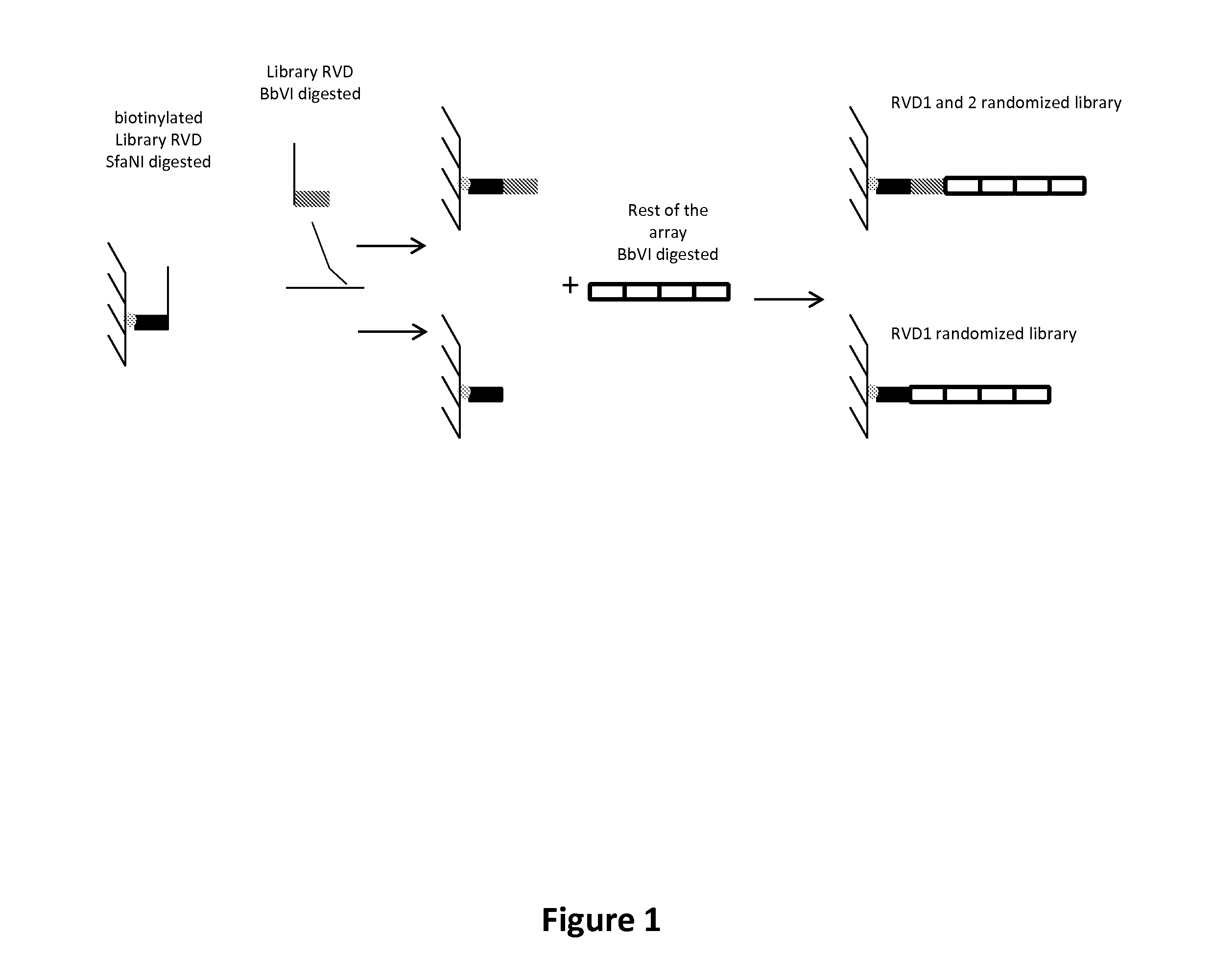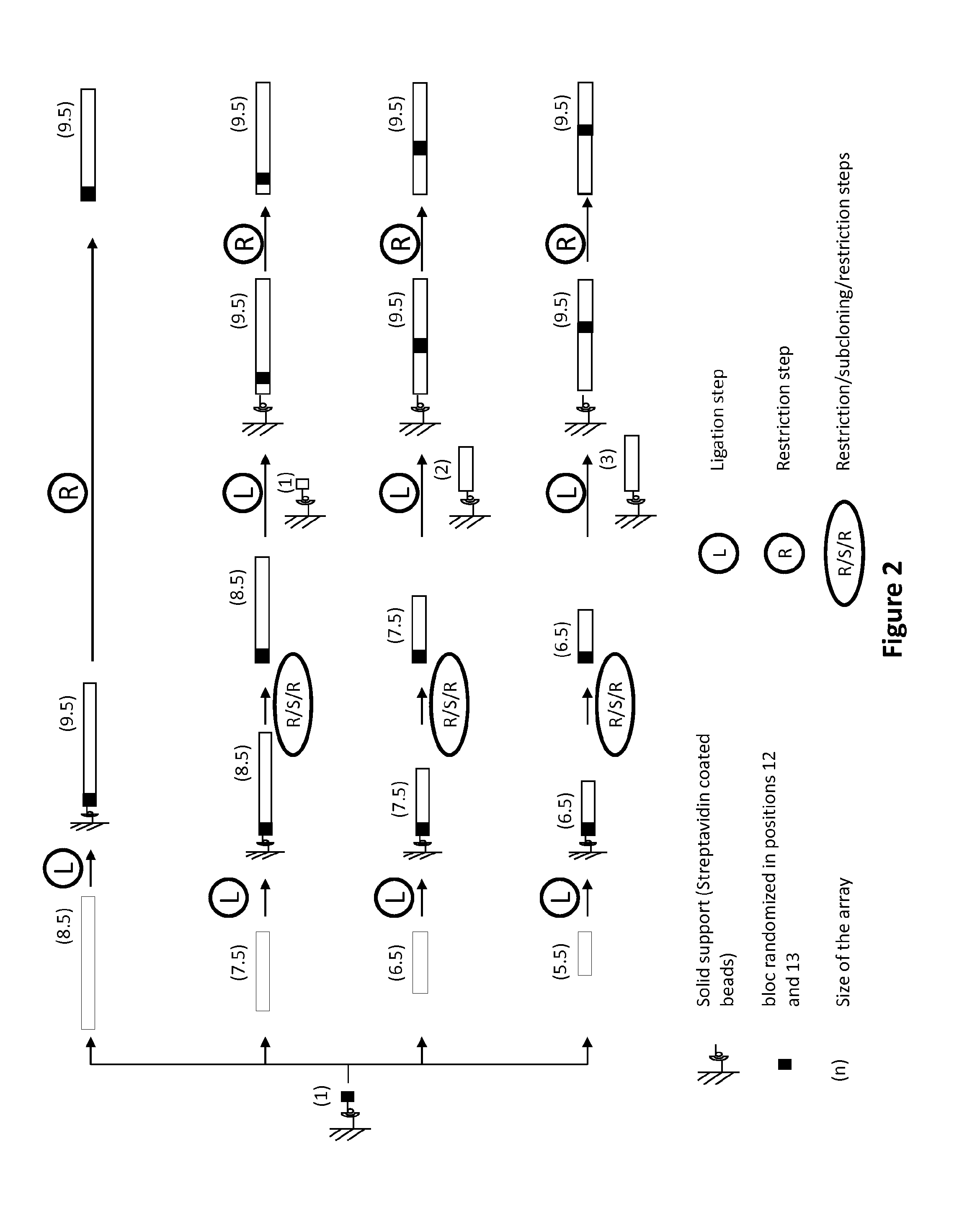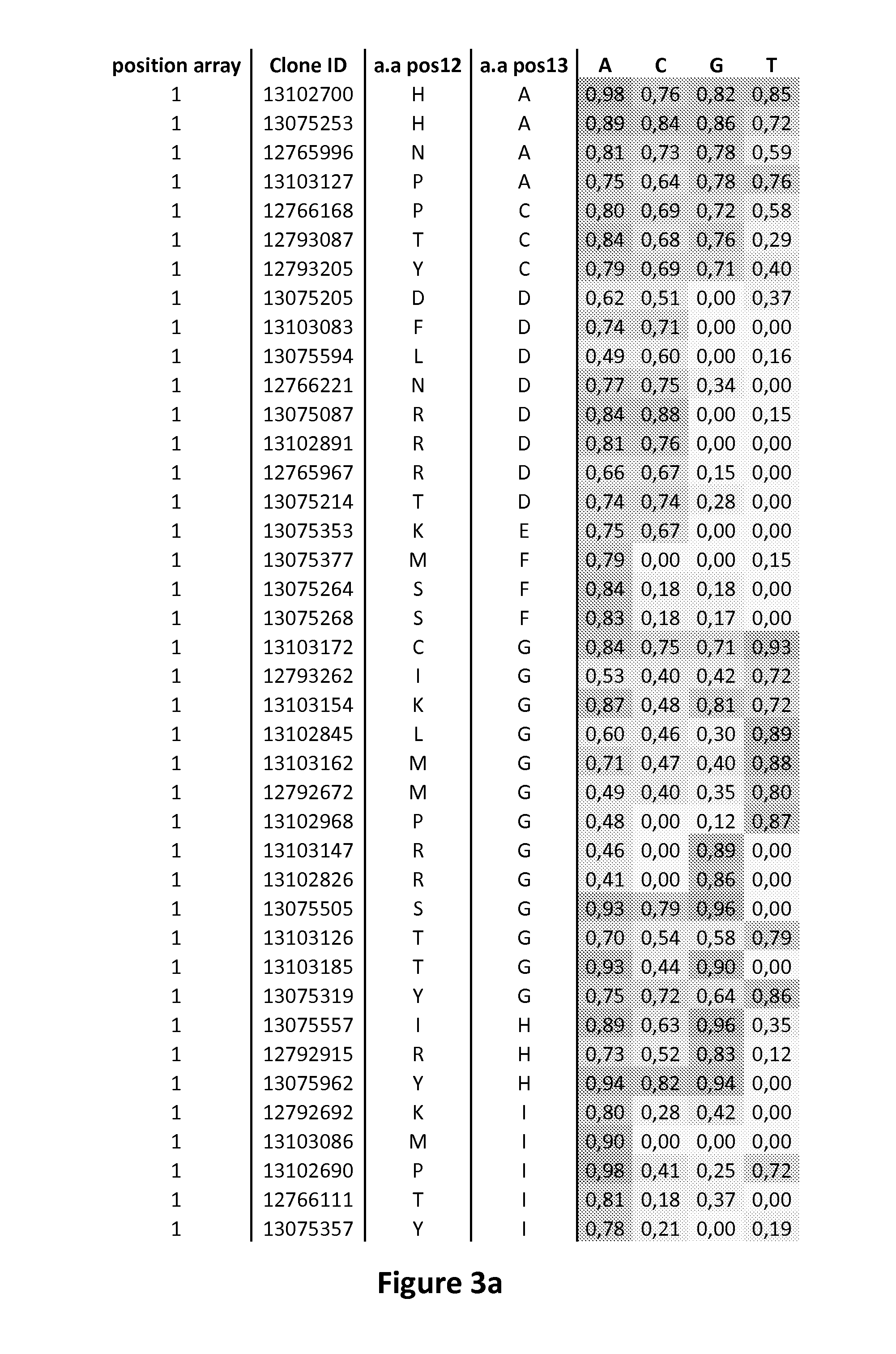New repeat variable diresidues for targeting nucleotides
a repeat variable and nucleotide technology, applied in the field of polypeptides, can solve the problems of nuclease failure, published successful use of tale-nucleases without reporting, etc., and achieve the effect of efficiently targeting and/or processing nucleic acids
- Summary
- Abstract
- Description
- Claims
- Application Information
AI Technical Summary
Benefits of technology
Problems solved by technology
Method used
Image
Examples
examples
[0211]A first characterization of the activity, in yeast, of libraries having position 12 and / or 13 randomized (based on a HD scaffold, SEQ ID NO: 19) was performed. The randomization was performed on the RVD in position 1 and / or on the RVDs in position 1 and 2 according to the target.
Libraries on Position 12 and 13
[0212]Eight libraries (lib1 to 8) which contain only a subset of the possible 20 natural amino acids and one library (lib9) containing the 20 possible amino acids were first used. The randomization of positions 12 and 13 was performed using degenerated oligonucleotides (Table 1; SEQ ID NO: 26-39) and conventional Overlap Extension (OE) PCR techniques using a HD mono-RVD in a pAPG10 plasmid (SEQ ID NO: 40) as template.
TABLE 1List of oligonucleotides (5′→3′) used to introduce diversityin positions 12 and 13 in libraries of a HD bloc.Oligo-SEQDiversitynucleo-IDMono-Di-LibrarytidesSequences 5′->3′NO:RVDRVDA1cccagtcacgacgttgtaaaac26Lib 1B1gtctccagcgcctgcttgccgcccHNSaYgctggcgat...
example 2
[0218]To design new RVD / target pairs (in the context of a TALE-nuclease) an extensive characterization of the activity in yeast of libraries having position 12 and / or 13 randomized was performed. The randomization was performed in NNK libraries on positions 12 and 13 of a repeat unit inserted at position 1 to 4 of the array of 9.5 repeat units.
[0219]The randomization of positions 12 and 13 was performed using degenerated oligonucleotides (Table 4, SEQ ID NO: 79-84) and conventional Overlap Extension (OE) PCR techniques using a NG mono-repeat unit (SEQ ID NO: 85) in a pAPG10 plasmid (SEQ ID NO: 86) as template. All DNA fragments used in the different steps were purified by appropriate techniques. In brief, the DNA fragment containing the randomized 6 base pairs are generated using oligonucleotide E1 (SEQ ID NO: 79) combined with E2 (SEQ ID NO: 80) leading to FRAG1 and the complementary fragment was generated using oligonucleotides F1 (SEQ ID NO: 81) combined with F2 (SEQ ID NO: 82) l...
PUM
| Property | Measurement | Unit |
|---|---|---|
| Catalytic activity | aaaaa | aaaaa |
Abstract
Description
Claims
Application Information
 Login to View More
Login to View More - R&D
- Intellectual Property
- Life Sciences
- Materials
- Tech Scout
- Unparalleled Data Quality
- Higher Quality Content
- 60% Fewer Hallucinations
Browse by: Latest US Patents, China's latest patents, Technical Efficacy Thesaurus, Application Domain, Technology Topic, Popular Technical Reports.
© 2025 PatSnap. All rights reserved.Legal|Privacy policy|Modern Slavery Act Transparency Statement|Sitemap|About US| Contact US: help@patsnap.com



